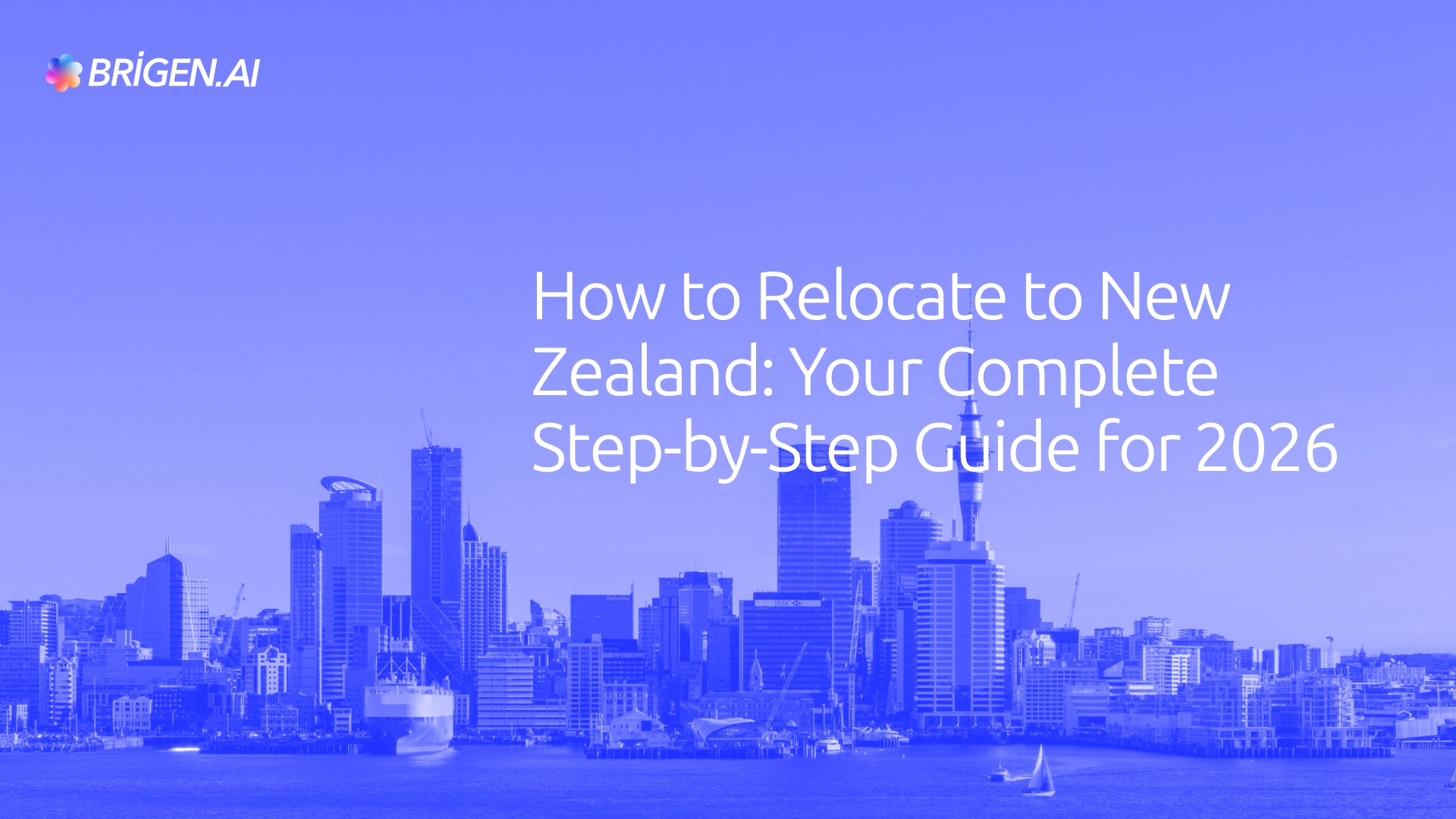The Complete Guide to Becoming a UX/UI Designer in New Zealand: Industry Insights & Career Pathways

New Zealand's digital economy is experiencing significant growth, creating compelling opportunities for UX/UI designers. Whether you're an international professional considering relocation or a local designer planning your next career move, understanding the landscape, salary expectations, and strategic resources available is crucial for success.
The Current State of UX/UI Design in New Zealand
The demand for skilled UX/UI designers in New Zealand continues to outpace supply. According to recent industry data, there aren't enough experienced user experience designers to meet the current market demand, with nearly two-thirds of IT employers reporting skills shortages across the technology sector.
This skills gap creates a favorable environment for qualified designers. Digital companies, software firms, fintech startups, and enterprise organizations across Auckland, Wellington, and Christchurch are actively seeking talented professionals who can deliver exceptional user experiences in an increasingly digital-first economy.
Salary Expectations and Compensation Trends
Understanding compensation is essential when planning your career trajectory or relocation. The UX/UI design market in New Zealand offers competitive salaries that vary based on experience, location, and specialization.
Mid-Level UX/UI Designers can expect salaries ranging between NZ$70,000 to NZ$95,000 annually, with some sources reporting ranges up to NZ$110,000 depending on the employer and specific skill set. Auckland typically offers the highest compensation packages, followed by Wellington and Christchurch.
Senior UX/UI Designers with extensive experience command significantly higher salaries, ranging from NZ$120,000 to NZ$140,000 annually. Those working with cutting-edge technologies, AI products, or enterprise-level systems often earn at the upper end of this spectrum.
Entry-Level Positions generally start around NZ$60,000 to NZ$70,000, though talented graduates with strong portfolios can negotiate higher starting salaries, especially in competitive markets.
For freelance and contract work, hourly rates typically range from NZ$31 to NZ$42, with experienced designers commanding premium rates for specialized projects.
Key Industry Sectors Hiring UX/UI Designers
New Zealand's diverse digital economy spans multiple sectors, each offering unique opportunities:
Software Development Companies focus on SaaS products, mobile applications, and enterprise solutions, requiring designers who understand complex user workflows and B2B experiences.
Digital Agencies serve varied clients across industries, offering designers exposure to diverse projects ranging from e-commerce platforms to corporate websites and marketing campaigns.
Fintech and Banking institutions prioritize security, compliance, and user trust, creating demand for designers skilled in designing financial interfaces that balance usability with regulatory requirements.
E-commerce and Retail businesses increasingly invest in digital experiences, requiring designers who understand conversion optimization, mobile-first design, and omnichannel user journeys.
Government and Public Services are modernizing digital offerings, seeking designers who can create accessible, inclusive experiences for diverse populations.
Healthcare and MedTech sectors require specialized knowledge of HIPAA-equivalent regulations, accessibility standards, and designing for clinical workflows.
Essential Skills for Success in the New Zealand Market
The New Zealand market values designers who bring both technical expertise and cultural awareness. Beyond foundational skills in user research, wireframing, prototyping, and visual design, several competencies distinguish successful practitioners:
Collaborative Design Thinking is highly valued in New Zealand's culture, which emphasizes teamwork and consensus-building. Designers who facilitate workshops, engage stakeholders, and work effectively across departments thrive in this environment.
Māori Cultural Competency demonstrates respect for New Zealand's bicultural foundation. Understanding Te Ao Māori perspectives, incorporating culturally appropriate design patterns, and designing bilingual interfaces (English and Te Reo Māori) can differentiate your work.
Mobile-First and Responsive Design expertise is non-negotiable, as mobile usage continues to dominate web traffic across New Zealand.
Data-Driven Design skills, including analytics interpretation, A/B testing, and conversion rate optimization, help designers demonstrate measurable business impact.
Accessibility and Inclusive Design knowledge ensures your work complies with New Zealand's accessibility standards and serves diverse user needs.
Design Systems and Component Libraries experience is increasingly important as organizations scale their digital products and seek consistency across platforms.
Navigating Visa Requirements and Immigration Pathways
For international designers considering relocation, understanding New Zealand's visa system is essential. While UX/UI design isn't currently on the Green List (which offers fast-track residence pathways), several viable options exist:
Accredited Employer Work Visa is the most common pathway for skilled workers. Employers on the accredited employers' list can support your work visa application, allowing you to work legally while potentially building toward residence.
Skilled Migrant Category Resident Visa provides a pathway to permanent residence if you accumulate sufficient points based on factors including age, work experience, qualifications, and job offers in New Zealand.
Post-Study Work Visa offers recent graduates from New Zealand institutions a pathway to gain local work experience, which can then support residence applications.
The visa process involves complexities around ANZSCO occupational classifications, points calculations, and documentation requirements. Working with experienced migration agents can significantly streamline this process, ensuring you understand your options, prepare comprehensive applications, and avoid costly mistakes.
The Strategic Value of Career Mentorship
Breaking into New Zealand's UX/UI design market requires more than technical skills—it demands local knowledge, cultural understanding, and strategic networking. This is where connecting with a career mentor becomes invaluable.
Industry-Specific Guidance from experienced New Zealand-based UX/UI designers provides insights into market expectations, portfolio requirements, and interview processes that differ from other markets.
Cultural Navigation helps international designers understand New Zealand's workplace culture, communication styles, and professional norms that might differ significantly from their home countries.
Network Building through mentor connections opens doors to opportunities not advertised publicly, as many positions in New Zealand's tight-knit design community are filled through referrals.
Portfolio Optimization with local expertise ensures your work resonates with New Zealand employers and demonstrates understanding of the market's unique needs.
Salary Negotiation guidance helps you understand fair compensation, benefits packages, and how to position yourself competitively without underselling your skills.
Career Progression Strategy from mentors who've navigated the local market helps you identify growth opportunities, whether pursuing senior IC roles, management positions, or specialized expertise.
Leveraging AI-Powered Career Matching
Traditional job searching and mentor finding can be time-consuming and overwhelming, especially when entering a new market. Brigen.ai addresses this challenge through AI-powered matching technology that connects UX/UI designers with relevant career mentors and migration agents based on specific needs, experience levels, and career goals.
Rather than spending weeks researching potential mentors or immigration advisors, the platform's intelligent matching system analyzes your profile and connects you with professionals who have relevant experience in your specific situation—whether that's transitioning from a particular country, targeting specific design specializations, or navigating complex visa scenarios.
This targeted approach saves valuable time and increases the likelihood of finding support that genuinely aligns with your career trajectory and personal circumstances.
Current Industry Trends Shaping UX/UI Design
Understanding emerging trends helps position yourself as a forward-thinking designer:
AI Integration is transforming design workflows and user experiences. Designers who understand how to design for AI-powered features, chatbots, and predictive interfaces are increasingly valuable.
Design for Sustainability reflects New Zealand's environmental consciousness, with companies seeking designers who can create digital products that minimize environmental impact.
Inclusive Design Practices extend beyond accessibility compliance to genuinely designing for diverse abilities, cultural backgrounds, and user contexts.
Design Operations (DesignOps) expertise is emerging as organizations mature their design practices and seek to scale efficiently.
Voice and Conversational UI skills are growing in demand as smart speakers and voice-activated interfaces become mainstream.
Practical Steps to Launch Your Career
Moving your UX/UI design career to New Zealand requires strategic planning:
Research Target Companies thoroughly, understanding their design maturity, technology stacks, and cultural values before applying.
Tailor Your Portfolio to demonstrate work relevant to New Zealand's market, including mobile-first designs, accessible interfaces, and evidence of user-centered design processes.
Build Local Connections through online communities, design meetups (Auckland and Wellington have active design communities), and LinkedIn networking.
Understand the Market by researching salary expectations, common tools and methodologies used locally, and typical interview processes.
Prepare for Cultural Differences in workplace communication, feedback styles, and professional expectations that may differ from your home country.
Secure Professional Guidance by connecting with career mentors who understand the local market and migration agents who can navigate visa complexities.
Conclusion: Your Pathway Forward
New Zealand offers UX/UI designers a compelling combination of competitive compensation, quality of life, and growing opportunities in an expanding digital economy. Success requires understanding the local market, navigating immigration requirements strategically, and building connections that provide insider knowledge.
By leveraging resources like experienced career mentors and specialized migration agents—easily accessible through AI-powered platforms like Brigen.ai—you can significantly increase your chances of a successful transition while avoiding common pitfalls that derail many international designers.
The demand for skilled UX/UI designers continues to exceed supply, creating a favorable environment for well-prepared professionals. With strategic planning, local guidance, and commitment to understanding New Zealand's unique design landscape, your career transition can become a rewarding next chapter in your professional journey.
Ready to take the next step? Connect with experienced career mentors who understand the New Zealand UX/UI design market and migration agents who can guide your visa journey. Visit Brigen.ai to get started with AI-powered matching that connects you with the right professionals for your specific needs.






